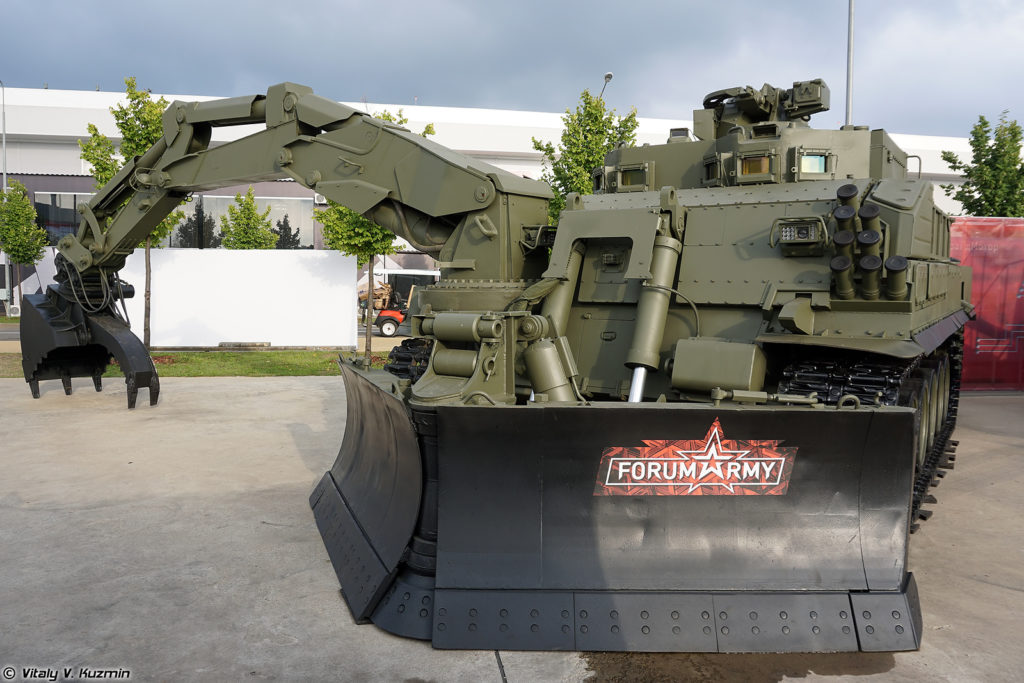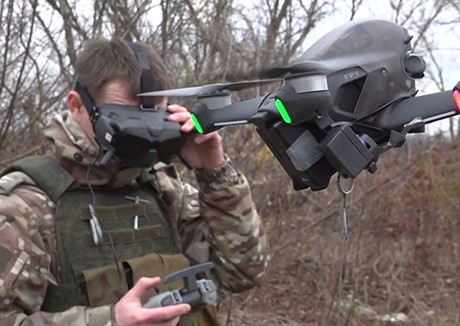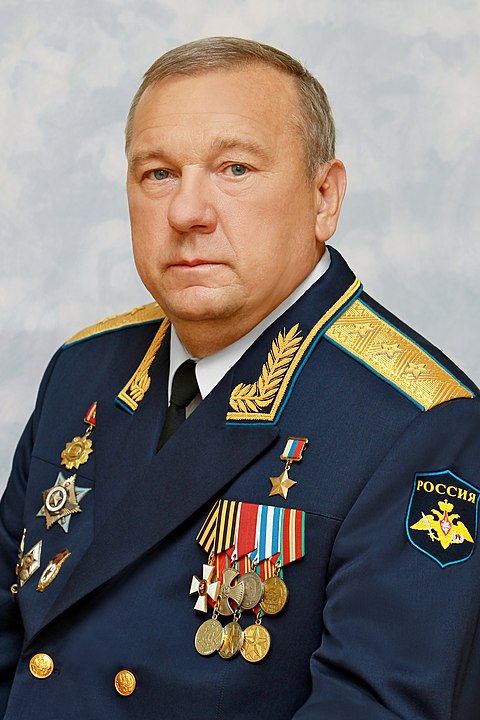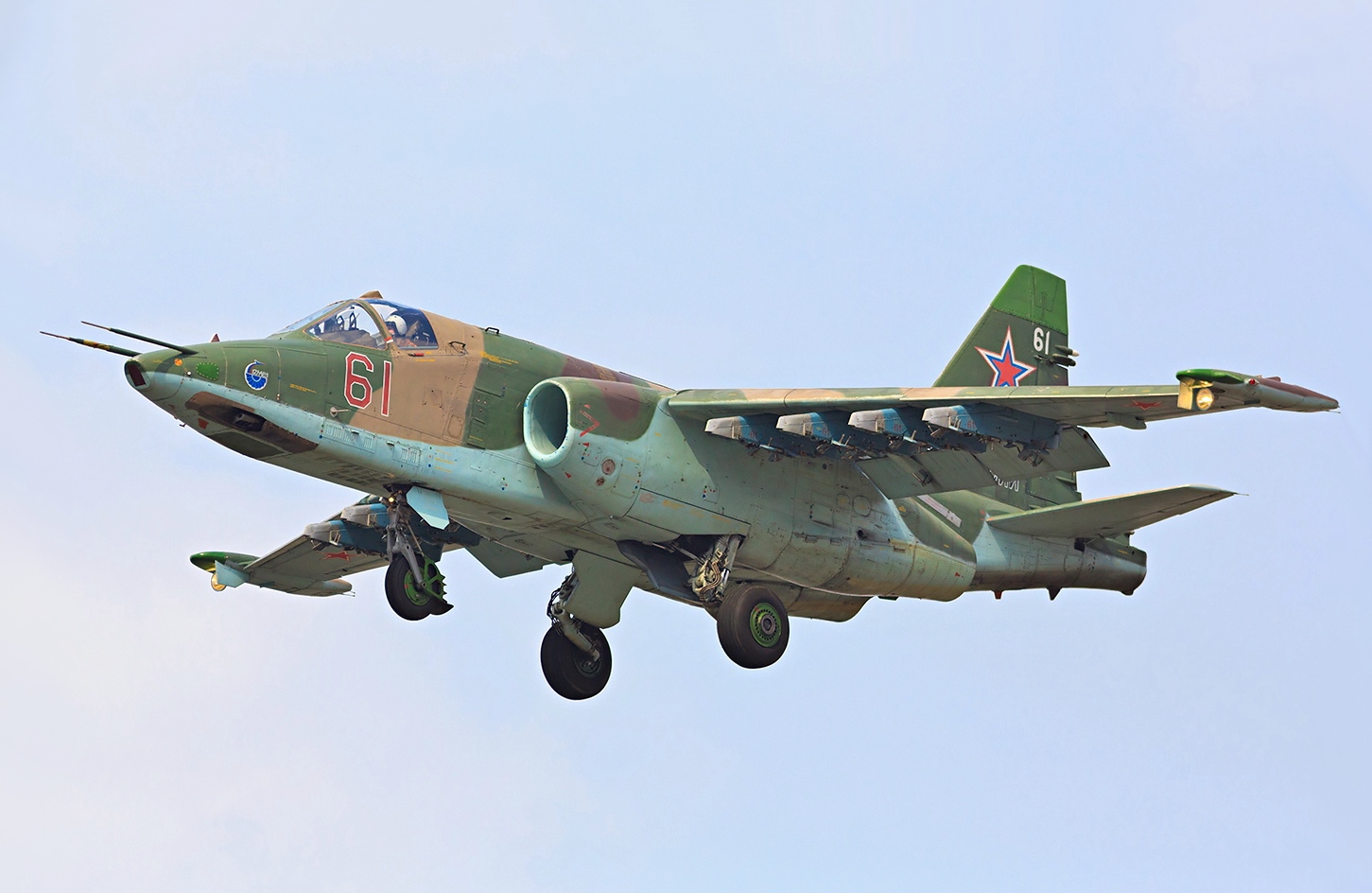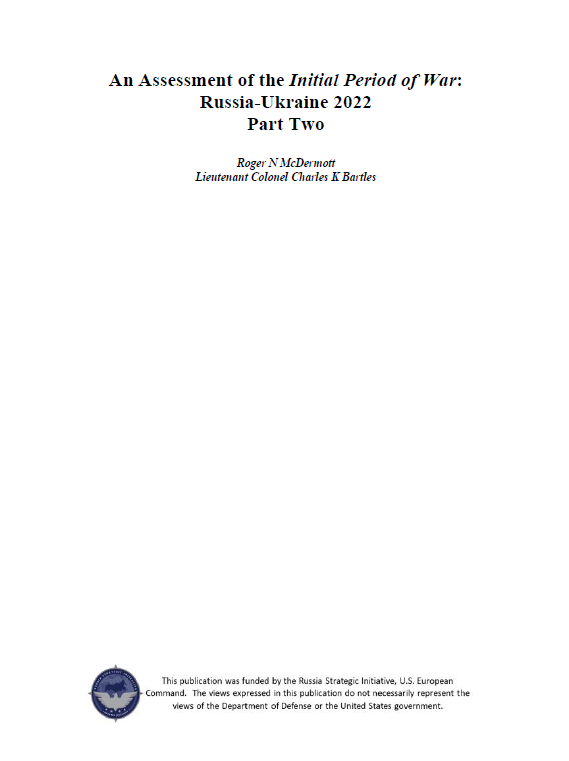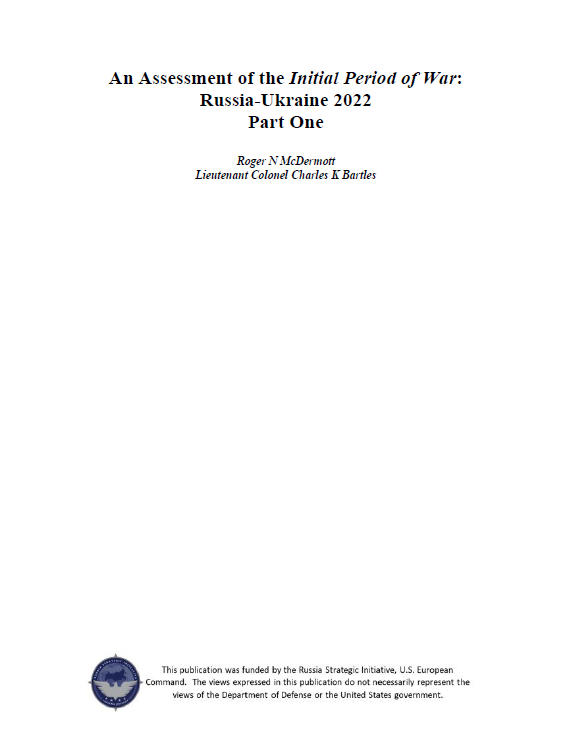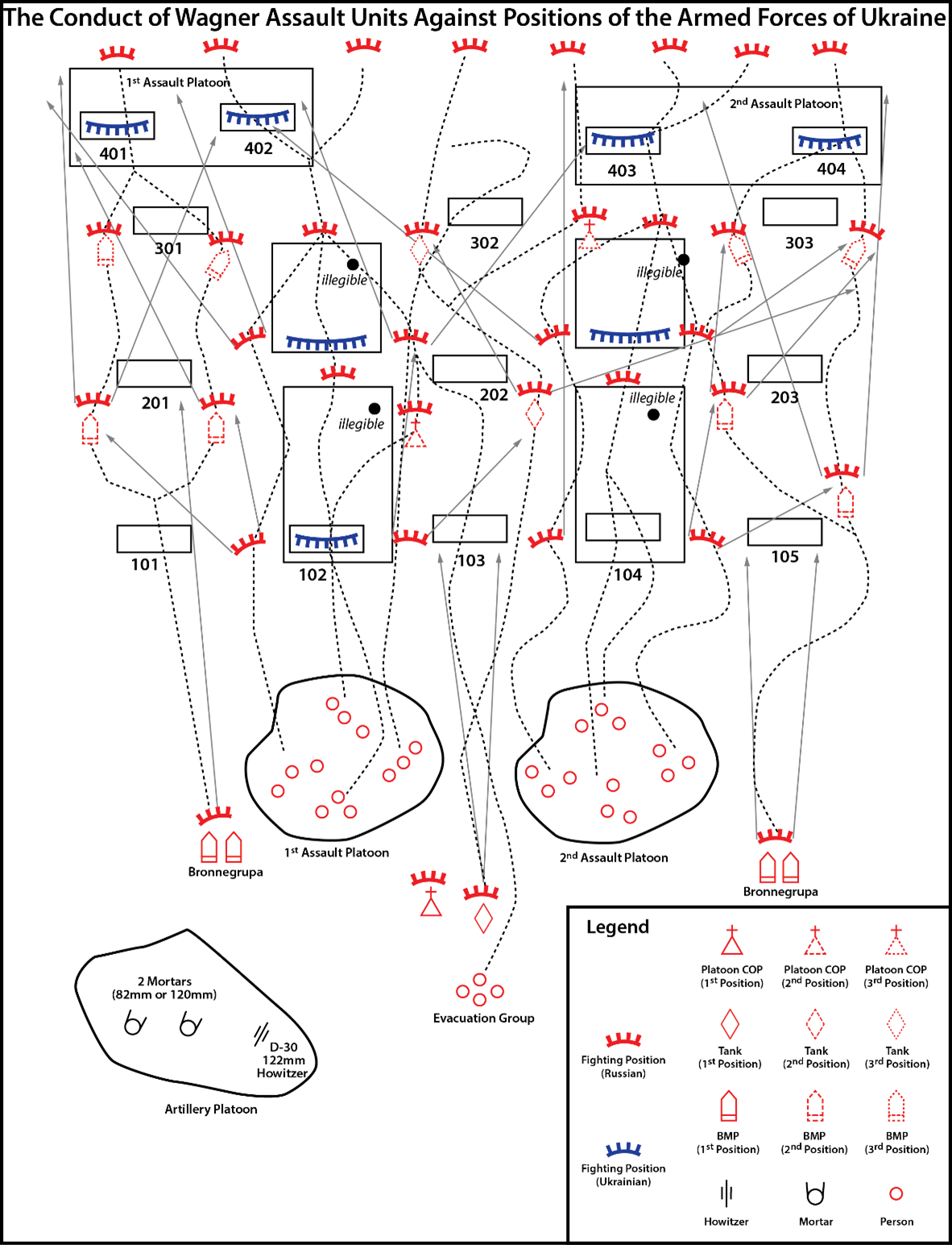“The main difficulty in conducting defense in the context of the enemy’s implementation of the “multi-domain battle” concept is that units, occupying strong points, positions and areas, are not able to quickly and effectively respond to enemy actions, especially when changing the direction of action and carrying out flanking maneuvers.”
Russia is working to understand the U.S. Army’s “multi-domain operations” (MDO) concept,[i] Which can roughly be described as the coordinated employment of the domains of war (land, air, sea, space, cyber, etc.) to achieve an operational-level objective. The accompanying excerpted article from the monthly Russian military periodical, Armeisky Sbornik, discusses the Russian Armed Forces’ understanding of the U.S. MDO concept, the potential effects of MDO if employed against the Russian Ground Forces, and what course of action a Russian Battalion Tactical Group (BTG) should execute to best overcome it.[ii] The authors believe that a successful first strike on a Russian BTG by a U.S. Army MDO Brigade could be decisive due to the attrition of the BTG’s command and control and combat capabilities. The authors posit that the best defense for a BTG against an attacking MDO Brigade is the use of positional defense (as opposed to maneuver defense), and a preemptive attack. To achieve this, up to one-third of the combined arms subunits in the BTG should act as flanking or raiding detachments and conduct preemptive actions to hinder the enemy. These actions might include defeating artillery, air defense systems, and command posts, and disrupting command and control and logistics, thereby disrupting the MDO Brigade’s ability to conduct a decisive counter-attack. It is important to note that the authors, and many other Russian commentators, see the so-called “Special Military Operation” in Ukraine as not only a testing ground for new Russian military technologies and tactics, but also as a testing ground for new U.S./NATO technologies and tactics by way of Ukrainian proxies. As such, this article will likely be the first of many analyses discussing the best ways for the Russian Armed Forces to counter U.S. military technology and tactics based on the lessons from the Russian invasion of Ukraine.
Sources:
R. Shaykhutdinov, I. Starodubtsev, “Оборона батальонной тактической группы в условиях «многосферного сражения» (The conduct of a defense by a battalion tactical group under conditions of «multi-domain battle»),” Armeisky Sbornik (monthly Russian military periodical), October 2023. https://army.ric.mil.ru/Stati/item/521356/
Against the background of strengthening the military power of Russia and China, the United States began to develop new approaches that would ensure the superiority of its troops in military conflicts with an enemy of comparable combat capabilities. The basic principles and procedures for conducting combat operations as part of interservice and coalition groupings of troops in various operational environments at the strategic, operational and tactical levels were formulated…
Military experts F.I. Ladygin, S.V. Afanasyev and A.V. Khomutov argue that such a model provides for the creation in the US ground forces of “a new type of formations deployed in advance in forward areas – “ multi-domain brigade tactical groups”, which will be able to operate in all environments, in isolation from the main grouping of troops, in conditions of constant contact with the enemy to identify his vulnerabilities and ensure the involvement of the main forces in them”…
The main difficulty in conducting defense in the context of the enemy’s implementation of the “multi-domain battle” concept is that units, occupying strong points, positions and areas, are not able to quickly and effectively respond to enemy actions, especially when changing the direction of action and carrying out flanking maneuvers. Also significant is the inevitable disunity of battalion defensive strong points during defense — when on a wide front these strong points cannot provide mutual fire support to one another, which can allow the enemy to employ flanking and raid actions to infiltrate the battalion’s combat formation….
The analysis of the views of the US and NATO command on the offensive and the experience of conducting a special military operation in Ukraine raises the need to search for new ways of conducting combat actions at the tactical level. The enemy’s use of modern weapons supplied by the united West, especially during shelling of Donetsk, Lugansk and other liberated areas, requires improved methods of action of combined arms formations when defeating the enemy.
The extreme saturation of modern armies with guided anti-tank weapons, air defense and missile defense systems has sharply increased the importance of the positional defense. The combat formation of a battalion tactical group in positional defense is built primarily in one echelon and includes: the first echelon, combined arms reserve, artillery units, air defense units, anti-tank reserve, as well as regular and attached units and fire assets that remain directly subordinate to the commander of the battalion tactical group…
An analysis of the possible distribution of forces and means of a battalion tactical group shows that with a “typical distribution” of forces and means of a battalion, taking into account the fact that before an attack the enemy will inevitably lay indirect and direct fires, shows that most of the fire will fall on strong points of the first echelon companies (on 50–60% of the battalion’s forces). Losses of the battalion tactical group can reach up to 70%. Consequently, the existing methods of conducting the defense of a battalion tactical group raise questions regarding the capabilities of successfully completing a combat mission. To increase the effectiveness of the defense of a battalion tactical group, it must conduct “preemptive actions”.
The method is based on active use of offensive actions when conducting defense, going beyond the front line. At the same time, up to 1/3 of combined arms subunits, acting as flanking and raiding detachments, carry out preemptive actions against the enemy, such as defeating artillery, air defense systems, command posts, and disrupting command and control and logistics.The essence of preemptive attack is to defeat enemy targets by flanking and raid groups of combat vehicles operating forward of the front line of defense in order to prevent further enemy offensive actions…
Notes:
[i] “The U.S. Army in Multi-Domain Operations 2028 concept proposes a series of solutions to solve the problem of layered standoff. The central idea in solving this problem is the rapid and continuous integration of all domains of warfare to deter and prevail as we compete short of armed conflict. If deterrence fails, Army formations, operating as part of the Joint Force, penetrate and dis-integrate enemy anti-access and area denial systems; exploit the resulting freedom of maneuver to defeat enemy systems, formations and objectives and to achieve our own strategic objectives; and consolidate gains to force a return to competition on terms more favorable to the U.S., our allies and partners.” TRADOC Pamphlet 525-3-1, The U.S. Army in Multi-Domain Operations – 2028 (Fort Eustis, VA: TRADOC, 2018), iii. https://adminpubs.tradoc.army.mil/pamphlets/TP525-3-1.pdf
[ii] For an in-depth analysis of the Russian Battalion Tactical Group (BTG), see: Lester W. Grau and Charles K. Bartles, “Getting to Know the Russian Battalion Tactical Group,” Royal United Service Institute, 14 April 2022. https://www.rusi.org/explore-our-research/publications/commentary/getting-know-russian-battalion-tactical-group
